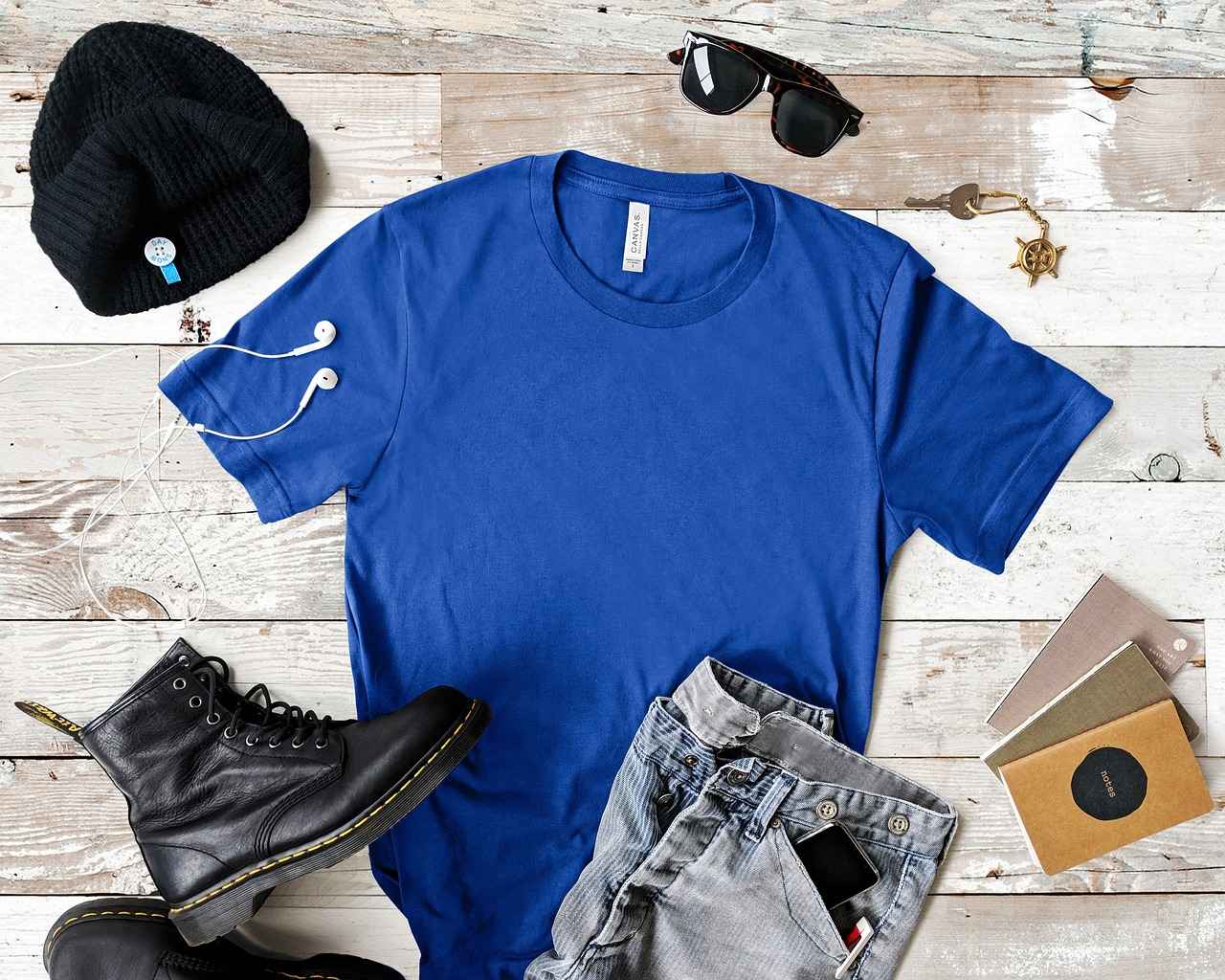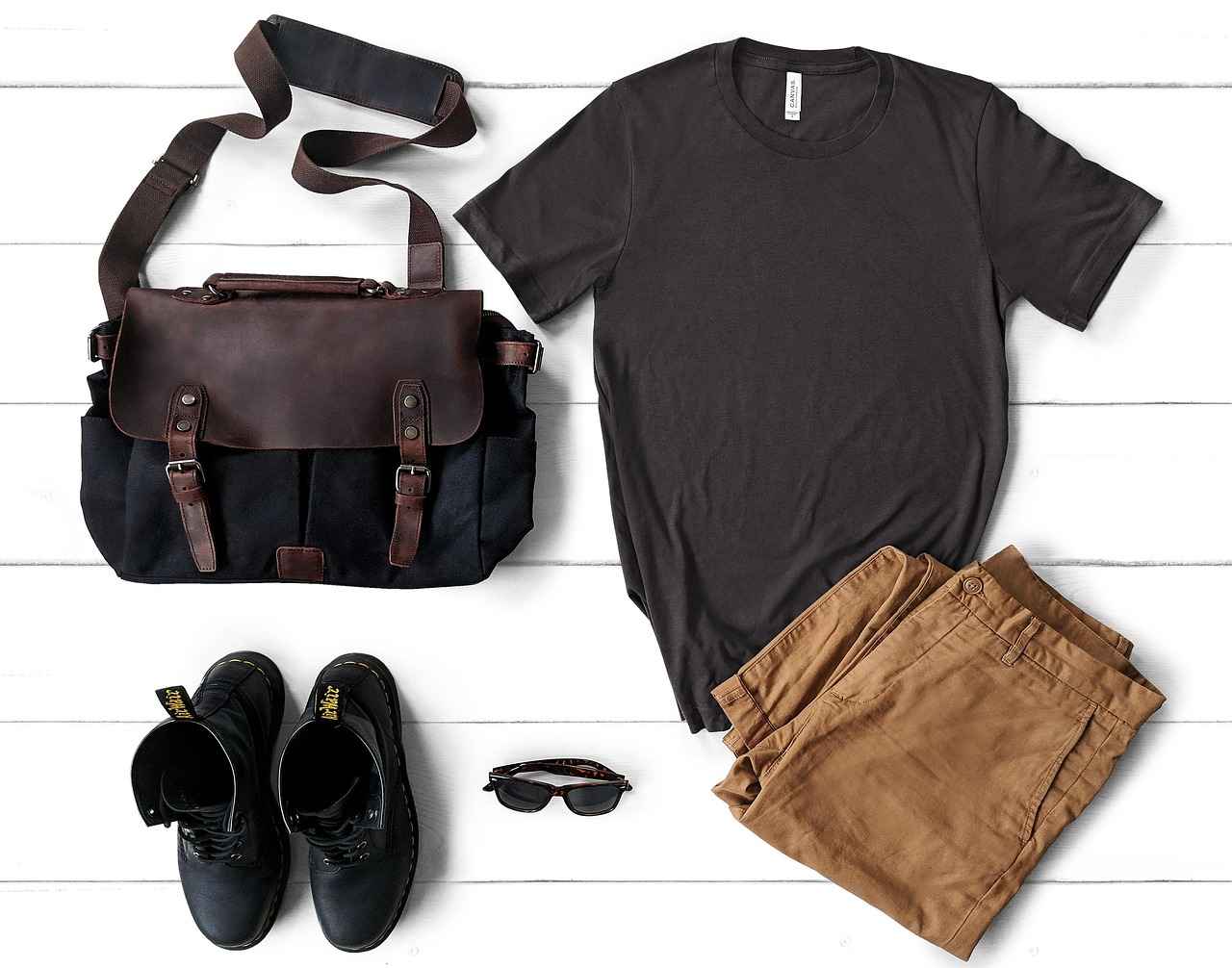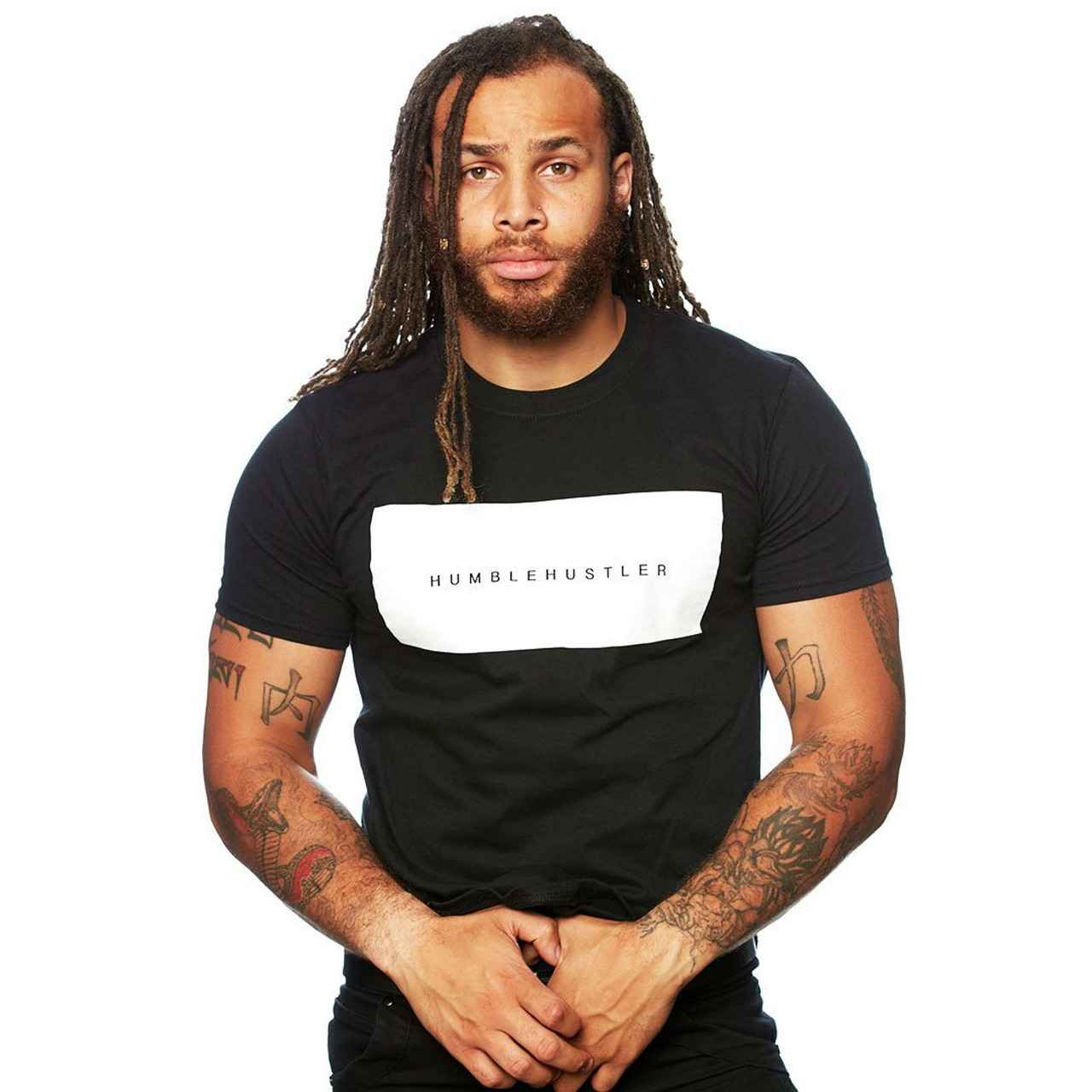This article serves as a comprehensive guide for anyone interested in creating their own custom t-shirts. It covers everything from design concepts to various printing methods, ensuring you have all the necessary information to embark on your custom apparel journey.
Creating custom t-shirts can be an exciting and fulfilling project. Whether you’re looking to promote a brand, celebrate a special occasion, or simply express your creativity, understanding the basics of t-shirt design is essential.
- Understanding the Basics of Custom T-Shirt Design: Familiarize yourself with key design principles such as color theory, typography, and layout. These elements are crucial for crafting visually appealing designs that resonate with your audience.
- Choosing the Right T-Shirt Fabric: The fabric you select plays a significant role in the comfort and durability of your t-shirts. Explore options like cotton, polyester, and various blends to find the perfect fit for your needs.
- Design Software and Tools for Custom T-Shirts: Utilize graphic design software and online platforms to enhance your creativity. There are many user-friendly tools available for both beginners and experienced designers.
- Printing Methods for Custom T-Shirts: Different printing techniques can yield different results. Learn about popular methods like screen printing and direct-to-garment (DTG) printing to determine which is best for your project.
- Marketing Your Custom T-Shirts: Once your t-shirts are designed, effective marketing is key. Utilize social media platforms and consider creating an online store to reach your target audience.
In conclusion, creating custom t-shirts is not only a fun activity but also a great way to express your individuality or promote a cause. With the right tools and strategies, you can successfully bring your unique designs to life.

Understanding the Basics of Custom T-Shirt Design
Creating custom t-shirts is not just about printing a design on fabric; it’s an art that involves a keen understanding of various design principles. To craft t-shirts that are both visually appealing and effective, it is essential to grasp the fundamental aspects of color theory, typography, and layout.
Color Theory
Color plays a pivotal role in t-shirt design. Different colors evoke different emotions and responses. For instance, red can symbolize passion and energy, while blue often conveys calmness and trust. When selecting colors for your designs, consider the message you want to communicate and how it aligns with your target audience’s preferences. Utilizing color harmonies, such as complementary or analogous colors, can create a more cohesive and attractive design.
Typography
The choice of font can significantly impact the overall look of your t-shirt. Typography should not only be legible but also reflect the theme of your design. For example, a playful font may suit a casual design, while a sleek, modern font might be better for a minimalist approach. Always ensure that the text is readable from a distance, as this is crucial for the effectiveness of your design.
Layout
A well-structured layout can enhance the visual appeal of your t-shirt. Consider the placement of your design elements carefully. A balanced layout ensures that no part of the design feels overcrowded or neglected. Utilize the principles of alignment and spacing to guide the viewer’s eye and create a harmonious composition.
In conclusion, mastering the basics of t-shirt design through color theory, typography, and layout is essential for creating custom apparel that resonates with your audience. By applying these principles, you can elevate your designs and make a lasting impression.

Choosing the Right T-Shirt Fabric
Selecting the appropriate fabric for your custom t-shirts is crucial for ensuring both comfort and durability. The right fabric not only affects the feel of the shirt but also its longevity and suitability for various occasions. Here, we will explore several popular fabric types, including cotton, polyester, and blends, to help you make an informed choice for your custom t-shirts.
| Fabric Type | Pros | Cons |
|---|---|---|
| Cotton | Soft, breathable, hypoallergenic | Can shrink, wrinkles easily |
| Polyester | Durable, moisture-wicking, quick-drying | Less breathable, can retain odors |
| Blends | Combines properties of cotton and polyester | Varies depending on blend ratio |
Cotton is a classic choice for custom t-shirts, known for its softness and breathability. It is ideal for casual wear and is often preferred for its comfort against the skin. However, one must consider that cotton can shrink after washing and may require more maintenance due to its tendency to wrinkle.
Polyester, on the other hand, is favored for its durability and moisture-wicking properties, making it a popular choice for athletic wear. It is resistant to shrinking and stretching, making it a practical option for active lifestyles. However, polyester can be less breathable than cotton and may retain odors if not washed properly.
Fabric blends offer a middle ground, combining the best qualities of both cotton and polyester. These blends can provide enhanced comfort and durability, making them suitable for a variety of uses. Understanding the specific blend ratios can help you select the best option for your needs.
In conclusion, when choosing the right fabric for your custom t-shirts, consider the intended use, comfort, and maintenance. By exploring the various fabric types and their characteristics, you can ensure that your custom t-shirts meet your expectations for both style and functionality.
Types of T-Shirt Fabrics
When it comes to creating custom t-shirts, choosing the right fabric is essential for ensuring comfort, durability, and overall satisfaction. In this section, we will explore the various types of fabrics available for t-shirt printing, along with their pros and cons, so you can make an informed decision that best suits your needs.
| Fabric Type | Pros | Cons |
|---|---|---|
| Cotton |
|
|
| Polyester |
|
|
| Fabric Blends |
|
|
In conclusion, understanding the different types of fabrics available for t-shirt printing is crucial for making an informed decision when creating your custom apparel. Whether you prioritize comfort, durability, or a combination of both, each fabric type has its unique advantages and drawbacks. By considering these factors, you can select the perfect fabric that aligns with your vision and needs.
Cotton T-Shirts
have become a staple in the world of custom apparel, and for good reason. Known for their softness and breathability, cotton t-shirts provide a comfortable wearing experience that is unmatched by many other fabrics. This article delves into the unique qualities of cotton and highlights why it remains a favored choice for casual wear.
One of the most significant advantages of cotton is its natural fibers. These fibers allow for excellent air circulation, making cotton t-shirts ideal for warm weather. Unlike synthetic materials, cotton helps to wick away moisture from the body, keeping the wearer cool and dry. This feature is particularly beneficial for those who lead an active lifestyle or live in hotter climates.
In addition to comfort, cotton t-shirts are known for their durability. When properly cared for, cotton garments can withstand numerous washes without losing their shape or color. This durability makes them a practical choice for everyday wear, as they can handle the rigors of regular use.
Another appealing aspect of cotton is its versatility. Cotton t-shirts can be easily customized with various printing techniques, such as screen printing or direct-to-garment printing. This adaptability allows for a wide range of designs, making cotton t-shirts suitable for personal expression, promotional events, or team uniforms.
Moreover, cotton is a biodegradable material, making it an environmentally friendly option compared to synthetic alternatives. As consumers become more conscious of their ecological footprint, choosing cotton apparel aligns with sustainable fashion practices.
In conclusion, the qualities of cotton t-shirts—such as their softness, breathability, durability, versatility, and eco-friendliness—make them an excellent choice for custom apparel. Whether for personal use or business purposes, cotton t-shirts provide a reliable and stylish option that meets the needs of various consumers.
Polyester T-Shirts
have gained immense popularity in the realm of athletic wear and casual fashion. This fabric is known for its durability and moisture-wicking properties, making it an excellent choice for various activities. Whether you’re hitting the gym, running a marathon, or simply enjoying a day out, polyester t-shirts can enhance your performance and comfort.
One of the primary advantages of polyester is its ability to wick moisture away from the body. This feature keeps you dry and comfortable during intense workouts, as it helps to evaporate sweat quickly. Unlike cotton, which tends to absorb moisture, polyester allows for better breathability, making it ideal for athletic wear.
In addition to moisture management, polyester is also known for its exceptional durability. It resists wear and tear, maintaining its shape and color even after multiple washes. This longevity makes polyester t-shirts a cost-effective option for those who want to invest in long-lasting apparel.
When considering whether to choose polyester over cotton, it’s important to assess your specific needs. If you prioritize breathability and moisture control, especially for physical activities, polyester is likely the better choice. On the other hand, if you prefer the natural feel and softness of cotton for casual wear, cotton may be more suitable.
In summary, polyester t-shirts offer numerous benefits, particularly for athletic and active lifestyles. Their ability to wick moisture, coupled with their durability, makes them a reliable choice for anyone looking to combine style with functionality. When selecting your next custom t-shirt, consider the advantages of polyester to enhance your overall experience.
Fabric Blends
are an innovative solution in the textile industry, merging the best qualities of different materials to create versatile and high-performance fabrics. When it comes to custom t-shirt production, understanding these blends can significantly enhance the quality and appeal of the final product.
Common fabric blends typically include combinations of cotton and polyester, among others. Each blend offers unique advantages that cater to various needs and preferences. Below, we will explore some of the most popular fabric blends and their benefits:
| Fabric Blend | Composition | Advantages |
|---|---|---|
| Cotton-Polyester Blend | 50% Cotton, 50% Polyester |
|
| Tri-Blend | 50% Polyester, 25% Cotton, 25% Rayon |
|
| Cotton-Spandex Blend | 95% Cotton, 5% Spandex |
|
Choosing the right fabric blend can greatly impact the comfort, durability, and overall appearance of your custom t-shirts. For instance, a cotton-polyester blend is ideal for everyday wear due to its softness and resilience, while tri-blend fabrics are perfect for a trendy, vintage look. Cotton-spandex blends offer the flexibility needed for active lifestyles, making them suitable for sports or casual outings.
In conclusion, understanding the various fabric blends available and their respective benefits allows you to make informed decisions when producing custom t-shirts. By selecting the right blend, you can ensure that your designs not only look great but also provide the comfort and durability that customers expect.

Design Software and Tools for Custom T-Shirts
When it comes to creating custom t-shirts, utilizing the right design software can significantly enhance your creativity and streamline the design process. Whether you are a beginner or an experienced designer, having access to the right tools can make all the difference. Below, we explore some popular software options and platforms that cater to a variety of skill levels.
| Software/Platform | Description | Best For |
|---|---|---|
| Adobe Illustrator | A professional vector graphic editor that offers advanced design capabilities. | Experienced designers |
| Canva | An intuitive online design tool with a user-friendly interface and pre-made templates. | Beginners and casual users |
| CorelDRAW | A powerful graphic design software that excels in vector illustrations. | Professional designers |
| T-shirt Design Maker | An online platform specifically tailored for t-shirt design, featuring drag-and-drop functionality. | Beginners |
In addition to these software options, there are several online platforms that simplify the t-shirt design process:
- Printful: Integrates with e-commerce platforms and offers a user-friendly design interface.
- Zazzle: Allows users to create custom products easily with a vast array of design tools.
- TeeSpring: Focuses on social commerce, enabling users to create and sell custom t-shirts directly.
These tools not only facilitate the design process but also empower you to express your creativity fully. By selecting the right software, you can create stunning designs that resonate with your audience and stand out in the market.
Conclusion
In conclusion, whether you are just starting out or looking to refine your skills, the right design software can elevate your t-shirt design experience. Explore these options to find the best fit for your creative needs, and start bringing your ideas to life!
Graphic Design Software Options
When it comes to creating stunning t-shirt designs, the right graphic design software can make all the difference. There are numerous options available, ranging from free tools for beginners to advanced paid software for professionals. Below, we will explore various software options that cater to different skill levels and design needs.
- Adobe Illustrator: A leading vector graphic design software, Adobe Illustrator is favored by professionals for its versatility and powerful features. It allows for precise control over designs, making it ideal for creating intricate t-shirt graphics.
- CorelDRAW: Another robust vector design tool, CorelDRAW offers a user-friendly interface and a variety of design tools. It’s particularly popular among t-shirt designers for its ability to handle large designs and complex layouts.
- Canva: For those who prefer a simpler approach, Canva is an excellent choice. It offers a range of templates and an intuitive drag-and-drop interface, making it easy for anyone to create eye-catching t-shirt designs without extensive graphic design experience.
- Inkscape: This free, open-source vector graphics editor is a great alternative to Adobe Illustrator. Inkscape provides many professional-grade features, making it suitable for those on a budget.
- GIMP: Another free option, GIMP is a powerful image editing software that can be used for t-shirt design. While it may have a steeper learning curve, its capabilities are extensive and can yield impressive results.
- Placeit: This online platform simplifies the design process by allowing users to create t-shirt mockups and designs quickly. It’s particularly useful for those looking to visualize their designs on actual t-shirts.
In summary, whether you are a seasoned designer or just starting, these graphic design software options provide a range of tools to help you create stunning t-shirt designs. Consider your skill level, budget, and design needs when selecting the right software for your project.
Online T-Shirt Design Platforms
have revolutionized the way individuals and businesses create custom apparel. Whether you’re looking to design a unique shirt for a special event or to launch your own clothing line, these platforms simplify the entire process, making it accessible to everyone, even those without extensive graphic design knowledge.
Many online platforms offer user-friendly interfaces that allow you to drag and drop elements, choose from a variety of templates, and customize your designs with ease. Here are some popular options:
- Canva: Known for its versatility, Canva provides a plethora of templates and design elements. Users can easily create t-shirt designs by utilizing its intuitive drag-and-drop feature.
- Teespring: This platform not only allows you to design but also helps you sell your custom t-shirts. With a straightforward interface, you can create designs and set up your online store in no time.
- Printful: Ideal for those looking to integrate their designs with e-commerce, Printful offers a wide range of products to customize, including t-shirts. Their mockup generator is particularly useful for visualizing your designs.
- Custom Ink: This platform specializes in custom apparel and provides a robust design tool that allows users to upload their artwork or use existing designs to create custom t-shirts.
These platforms typically include features such as:
- Templates: Pre-made designs that can be customized to fit your vision.
- Design Tools: Tools that let you adjust colors, fonts, and graphics to create a unique look.
- Preview Options: See how your design will look on a t-shirt before placing an order.
In conclusion, empower users to unleash their creativity without needing to be design experts. By leveraging these tools, anyone can create stunning custom t-shirts that reflect their personal style or brand identity.

Printing Methods for Custom T-Shirts
When it comes to creating custom t-shirts, the printing method you choose can significantly impact the final product. Each technique offers unique advantages and disadvantages, making it essential to understand the options available. Below, we explore some of the most popular printing methods to help you make an informed decision for your custom t-shirt project.
- Screen Printing: This traditional method involves creating a stencil (or screen) and using it to apply layers of ink on the fabric. It is known for producing vibrant colors and is ideal for bulk orders due to its cost-effectiveness. However, it may not be suitable for intricate designs with multiple colors.
- Direct-to-Garment (DTG) Printing: DTG printing is akin to using an inkjet printer for fabric. It allows for detailed and colorful designs, making it perfect for small runs or one-off items. The downside is that it may not be as durable as screen printing, especially after multiple washes.
- Heat Transfer Printing: This method involves printing the design onto a special transfer paper and then applying heat to transfer the design onto the t-shirt. It is versatile and suitable for complex designs, but the prints may not last as long as those from screen printing or DTG.
- Sublimation Printing: Sublimation is a technique that uses heat to transfer dye onto materials, primarily polyester. This method allows for full-color designs that become part of the fabric, resulting in vibrant prints that do not fade easily. However, it is limited to synthetic fabrics.
- Vinyl Cutting: This method uses a vinyl cutter to create designs from colored vinyl sheets. The design is then heat-pressed onto the t-shirt. Vinyl cutting is great for simple graphics and text but may not be suitable for detailed images.
Choosing the right printing method depends on your design, budget, and the intended use of the t-shirts. By understanding the strengths and limitations of each technique, you can select the best option that aligns with your creative vision.
Screen Printing
is a time-honored technique that has been utilized for decades to produce vibrant and durable designs on various materials, particularly fabrics. This method is renowned for its ability to create bold colors and intricate patterns, making it an ideal choice for custom t-shirts and other apparel.
The screen printing process involves several key steps:
- Design Creation: The first step is to create a design that will be transferred onto the fabric. This can be done using graphic design software.
- Screen Preparation: A fine mesh screen is coated with a light-sensitive emulsion. The design is then transferred to the screen, which is exposed to light, hardening the emulsion where the design is not present.
- Ink Application: Once the screen is prepared, ink is pushed through the mesh onto the fabric using a squeegee. This step is repeated for each color in the design, requiring a separate screen for each color.
- Drying: After printing, the shirts are cured in a dryer to ensure the ink adheres properly and withstands washing.
One of the main advantages of screen printing is its durability. The ink used in this method is thicker than that used in other printing techniques, allowing for designs that can endure frequent washing and wearing without fading. Additionally, screen printing is particularly effective for large orders, as the setup costs are offset by the ability to print many shirts at once.
However, screen printing may not be the best choice for every project. For designs with a high level of detail or many colors, other methods like Direct-to-Garment (DTG) printing might be more suitable. It’s essential to evaluate your design’s complexity and the intended use of the shirts before deciding on a printing method.
In conclusion, screen printing remains a popular choice for custom apparel due to its vibrant output and durability. Understanding the process and its advantages can help you make informed decisions for your custom t-shirt designs.
Direct-to-Garment (DTG) Printing
is a revolutionary method in the world of custom t-shirt production, allowing for intricate designs that traditional printing techniques struggle to replicate. This innovative approach utilizes specialized inkjet technology to apply designs directly onto fabric, making it an ideal choice for small runs and personalized items.
One of the primary advantages of DTG printing is its capability to handle detailed and colorful designs. Unlike screen printing, which often requires multiple screens for different colors, DTG can print a full-color image in a single pass. This means that even the most complex graphics, including gradients and photographic images, can be reproduced with stunning clarity.
Moreover, DTG printing is exceptionally versatile. It allows for quick turnaround times, making it perfect for on-demand printing. This is particularly beneficial for small businesses or individuals looking to create custom apparel without the burden of large inventory costs. With DTG, you can print one shirt at a time, which reduces waste and increases flexibility in design choices.
Another significant advantage is the softness of the print. DTG ink penetrates the fibers of the fabric, resulting in a print that feels as soft as the shirt itself. This contrasts with traditional methods, where the ink sits on top of the fabric, often leading to a stiffer feel.
However, it’s important to note that DTG printing does have some limitations. It works best on 100% cotton fabrics, as synthetic materials can affect the ink’s adherence and vibrancy. Additionally, while the initial setup costs are lower than screen printing, the cost per unit can be higher for larger quantities.
In conclusion, Direct-to-Garment printing offers a modern solution for custom t-shirt production, combining flexibility, detail, and comfort. Whether you’re a small business owner or an individual looking to create unique designs, DTG can meet your needs effectively.

Marketing Your Custom T-Shirts
Once your t-shirts are designed and produced, effective marketing is essential to ensure their success. Here are some proven strategies to promote your custom t-shirts and reach your target audience successfully.
- Leverage Social Media Platforms: Social media is a powerful tool for reaching potential customers. Create engaging content showcasing your t-shirts, including high-quality images and videos. Use platforms like Instagram, Facebook, and TikTok to connect with your audience. Consider running targeted ads to increase visibility.
- Influencer Collaborations: Partnering with influencers who resonate with your brand can amplify your reach. Choose influencers whose audience aligns with your target market. They can showcase your t-shirts in creative ways, driving traffic to your online store.
- Content Marketing: Start a blog or YouTube channel related to your t-shirt designs. Share stories behind your designs, fashion tips, or tutorials on styling your t-shirts. This not only builds brand loyalty but also enhances your SEO, making it easier for potential customers to find you online.
- Email Marketing: Build an email list to keep your customers informed about new designs, promotions, and exclusive offers. Send out regular newsletters with engaging content to maintain interest and encourage repeat purchases.
- Participate in Local Events: Attend local fairs, markets, or festivals to showcase your t-shirts. Having a physical presence allows potential customers to see and feel the quality of your products firsthand, increasing the likelihood of sales.
- Create a User-Friendly Online Store: A well-designed online store is crucial for conversions. Use platforms like Shopify or WooCommerce to create an easy-to-navigate site. Ensure your website is mobile-friendly, as many customers shop using their smartphones.
- Utilize SEO Best Practices: Optimize your product descriptions and website content with relevant keywords related to custom t-shirts. This will help improve your search engine rankings, making it easier for potential customers to discover your brand.
In conclusion, combining these marketing strategies will help you effectively promote your custom t-shirts and engage your target audience. By leveraging social media, collaborating with influencers, and optimizing your online presence, you can drive sales and grow your brand.
Utilizing Social Media
In today’s digital age, social media platforms have emerged as essential tools for marketing your custom t-shirts. These platforms not only help you reach a wider audience but also foster community engagement and brand loyalty. Here’s how to effectively leverage social media for maximum engagement and sales.
- Identify Your Target Audience: Understanding who your ideal customers are is crucial. Tailor your content to resonate with their interests and preferences.
- Choose the Right Platforms: Not all social media platforms are created equal. Focus on platforms like Instagram and Facebook, where visual content thrives and users actively engage with brands.
- Create Engaging Content: Post high-quality images of your t-shirts, share behind-the-scenes looks at the design process, and use videos to showcase your products in action. Engaging content encourages shares and comments.
- Utilize Hashtags: Incorporate relevant hashtags to increase the visibility of your posts. Research trending hashtags in the fashion and custom apparel niche to attract potential customers.
- Run Promotions and Contests: Encourage user participation by hosting contests or offering discounts. This not only boosts engagement but also incentivizes followers to share your brand with their networks.
- Collaborate with Influencers: Partner with influencers in the fashion or lifestyle sectors to reach their audience. Influencer marketing can significantly enhance your brand’s credibility and visibility.
By implementing these strategies, you can effectively harness the power of social media to not only promote your custom t-shirts but also build a loyal customer base. Remember, consistency is key; regularly engaging with your audience will foster a community around your brand.
In conclusion, social media is a dynamic tool that, when used effectively, can transform your custom t-shirt business. Stay creative, be authentic, and watch your brand thrive.
Creating an Online Store
Creating an online store is a crucial step in establishing your custom t-shirt business. Not only does it provide a platform to showcase your unique designs, but it also streamlines the selling process, making it easier for customers to browse, select, and purchase your products.
When choosing an e-commerce platform, consider factors such as user-friendliness, customization options, payment gateways, and integration with shipping services. Here are some popular platforms that can help you set up your online store:
- Shopify: Known for its ease of use, Shopify offers a variety of templates and features specifically designed for e-commerce. You can customize your store, manage inventory, and track sales all in one place.
- WooCommerce: This is a plugin for WordPress that allows you to turn your website into a fully functional online store. It’s highly customizable and ideal for those who already have a WordPress site.
- Etsy: If your custom t-shirts have a unique or artistic flair, Etsy is a great platform to reach a niche audience. It’s designed for handmade and custom items, providing a built-in customer base.
- BigCommerce: This platform is perfect for larger businesses that need robust features. It supports multiple sales channels and offers advanced SEO tools to help your store rank better in search engines.
Once you have selected a platform, focus on creating an engaging and user-friendly website. Ensure that your product images are high-quality and that your descriptions are clear and enticing. Implementing SEO strategies, such as using relevant keywords in your product descriptions and blog posts, can also help attract more visitors to your store.
In conclusion, setting up an online store is a vital step in growing your custom t-shirt business. By choosing the right platform and optimizing your site for user experience and search engines, you can effectively reach your target audience and boost your sales.

Conclusion: Bringing Your Custom T-Shirt Vision to Life
Creating custom t-shirts is not only an enjoyable activity but also a fulfilling way to express your creativity. With the right tools, techniques, and marketing strategies, you can successfully bring your unique designs to life. This guide will walk you through the essential steps to create your own custom t-shirts, ensuring you have all the necessary information to get started.
Understanding the Basics of Custom T-Shirt Design
Before diving into the creation process, it’s important to grasp the fundamental principles of t-shirt design. This includes color theory, typography, and layout. These elements play a crucial role in crafting visually appealing designs that resonate with your target audience.
Choosing the Right T-Shirt Fabric
The fabric you choose can greatly affect the comfort and durability of your custom t-shirts. Here are some popular fabric types:
- Cotton: Soft and breathable, making it ideal for casual wear.
- Polyester: Known for its durability and moisture-wicking properties, perfect for athletic gear.
- Fabric Blends: Combine the best qualities of different materials for enhanced performance.
Design Software and Tools for Custom T-Shirts
Utilizing the right design software can significantly enhance your creativity. Here are some options:
- Graphic Design Software: Tools like Adobe Illustrator and CorelDRAW offer advanced features for creating stunning designs.
- Online T-Shirt Design Platforms: Websites like Canva and Printful allow you to design without extensive graphic knowledge.
Printing Methods for Custom T-Shirts
Understanding different printing methods is essential for achieving the desired results:
- Screen Printing: Best for vibrant colors and large orders.
- Direct-to-Garment (DTG) Printing: Ideal for detailed designs and small quantities.
Marketing Your Custom T-Shirts
Once your t-shirts are designed and produced, effective marketing is crucial. Here are some strategies:
- Utilizing Social Media: Platforms like Instagram and Facebook can be powerful tools for promoting your designs.
- Creating an Online Store: Use e-commerce platforms like Shopify to streamline the selling process.
In summary, creating custom t-shirts is a rewarding journey that allows you to showcase your creativity. With the right knowledge and tools, you can turn your ideas into tangible products. Remember to focus on design, fabric choice, printing methods, and marketing strategies to ensure your success in the custom t-shirt business.
Frequently Asked Questions
- What is the best fabric for custom t-shirts?
The best fabric really depends on your needs! Cotton is soft and breathable, making it great for casual wear. If you’re looking for something durable and moisture-wicking, polyester might be your go-to. Fabric blends can also offer a mix of both worlds!
- Which design software should I use for creating t-shirts?
There are plenty of options out there! For beginners, online platforms like Canva or Printful are user-friendly. If you’re more experienced, Adobe Illustrator or CorelDRAW can give you more creative control. Choose what feels right for your skill level!
- What printing method is best for my custom t-shirts?
It depends on your design and order size! Screen printing is fantastic for bulk orders with vibrant colors, while Direct-to-Garment (DTG) printing is perfect for detailed designs and smaller runs. Think about your project needs before deciding!
- How can I effectively market my custom t-shirts?
Social media is a game changer! Platforms like Instagram and Facebook can help you reach your audience. Also, consider setting up an online store on platforms like Shopify to streamline your sales process. Engage with your customers and showcase your designs!












